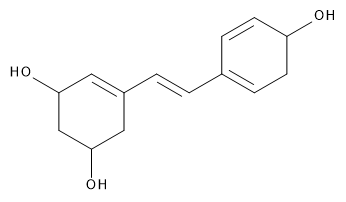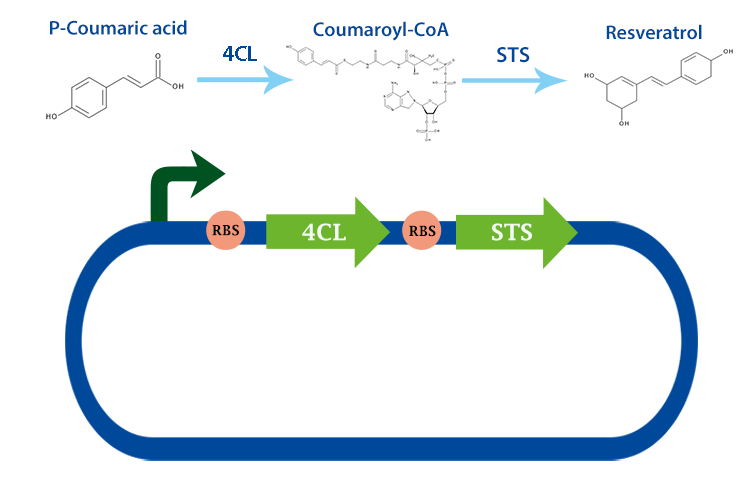
Resveratrol
Resveratrol (3,5,4′-trihydroxystilbene)
|
In our search for substances to put in our yoghurt we looked around in articles for molecules with good health effects. From the start we found resveratrol to stand out as a well-studied substance with some huge potential benefits. We mainly consume it via red wine and it is perhaps the main reason for why wine is considered good for your health in reasonable amounts.
Resveratrol belongs to a group of molecules known as Phyloalexin which is used by many plants to battle infections of all sorts.
Since the early 90’s there has been many studies done on resveratrol showing it has a wide range of beneficial properties ranging from skin cancer reduction to anti-inflamatory effects and antioxidant properties.
Perhaps the most interesting property is that of life extension. With 2.1 billion people being overweight worldwide obesity related diseases are one of humanities greatest health problems today.
Researchers now believe resveratrol is an caloric restricting substance reducing the effect of high caloric food and therefore increasing life expectancy.
|
 |

Results
Biobrick
We succeded in the cloning and sequencing of our two biobricks, 4-Coumarate ligase from
arabidophsis thaliana and Stilbene synthase from vitis vinifiera with the RBS B0034 that should work
in various organisms, lactobacillus and e-coli. Sequencing was done at GATC biotech and Uppsala
Genome center using sanger sequencing.
We also succeded in the making of our operon containing 4Cl and STS together.
BBa_K1033001: 4-Coumarate ligase with rbs <- länk biobrick
BBa_K1033002:Stilbene synthase with rbs <- länk biobrick
BBa_K1033003: 4Cl-STS both with rbs <- länk biobrick
Western blot
We also succeeded in expressing the enzyme stilbene synthase in e-coli. Altough our expression of the protein was very weak, and due to time constraints we were not able to optimize our experiment.
To enable the detection of this protein by anti-his antibodies, 6-histidine tags was incorporated in the sequence. This way we could detect our enzyme with anti-his antibodies. We expressed our protein with a multipromotor working in both lactobacillus and e-coli. This way, we can easily transfer stilbene synthase to lactobacillus later on.
The size of our protein was calculated using ProtParam [5], 43 kDA.
RESULTS TO COME
HPLC
We tested our biobrick 4Cl-STS on hplc, by adding p-coumaric acid as a precursor. Unfortunatly,
we could not see any clear results and theorize that it is because of our weak expression of the STS
enzyme. Due to time constraint we could not optimize our expression systems.
Sinclair, D. A & Baur, Y, A. Therapeutic potential of resveratrol:
the in vivo evidence. Nature 506 | JUNE 2006 | VOLUME 5
Baur, Y, A. et al. Resveratrol improves health and survival
of mice on a high-calorie diet. Nature Vol 444| 16 November 2006



